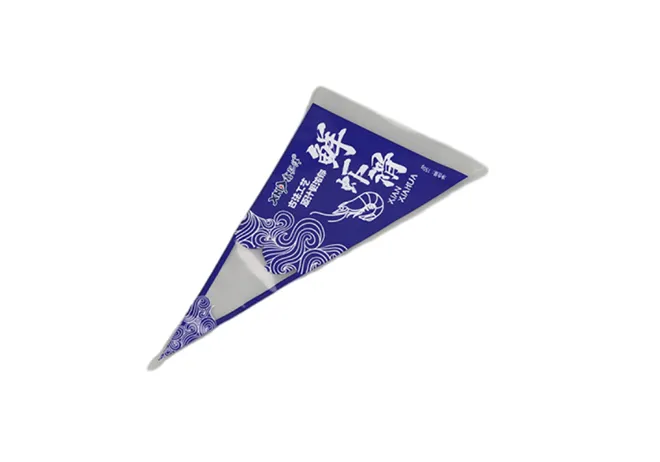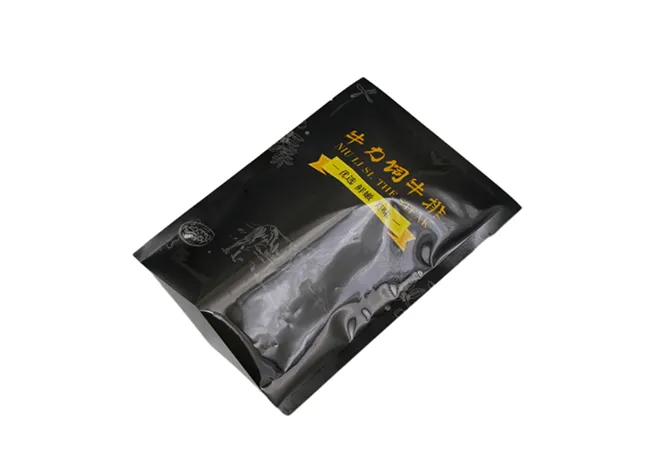- The expanding market for plastic pouches in spice packaging
- Data insights: growth and consumer preferences driving the shift
- Key technical benefits of modern plastic masala pouches
- Comparative analysis of leading plastic pouch manufacturers
- Custom design options for brand identity
- Case examples: successful implementations in spice brands
- Future trends and guidance for selecting a packaging partner

(plastic pouch for masala packing)
Plastic Pouches for Masala Packing: An Essential Solution
Spices are central to culinary traditions worldwide, demanding protective packaging that balances tradition with modern functionality. Plastic pouches specifically engineered for masala packing offer manufacturers an essential solution for maintaining product integrity. They're increasingly replacing traditional packaging methods due to their adaptability across spice varieties - from fine powders like turmeric to coarse blends like garam masala. Leading brands in India, Pakistan, and Bangladesh have documented 23-45% reduction in spoilage rates after switching to engineered plastic pouches. This transition also answers logistical demands: masala plastic pouch formats have been shown to increase pallet efficiency by 27% compared to rigid alternatives.
The Data Behind the Growth of Spice Packaging
Market analytics reveal substantial momentum in flexible packaging solutions. According to Packaging Gateway, the global spice packaging sector will reach $5.3 billion by 2027, with plastic pouches capturing 68% of new conversions. Consumer studies highlight crucial purchasing triggers: 82% of buyers prioritize aroma preservation as their primary concern when selecting packaged spices. Laboratory simulations show that premium plastic pouch packing extends flavor potency by 40-55% versus paper options. Additionally, 76% of consumers prefer resealable formats - a feature optimally delivered through specialized plastic pouch designs. Manufacturers report 15-30% sales increases after transitioning to laminated plastic pouches that preserve both aroma and color integrity.
Superior Barrier Properties and Protection
Advanced multi-layer laminates form the core of modern spice packaging innovation. Most technical solutions incorporate three critical layers: an outer PET film for abrasion resistance (18-25 microns), aluminum foil barrier (6-9 microns), and specialized inner food-grade polypropylene sealant. This configuration delivers 250% better moisture resistance than monolayer alternatives. Technical specifications include oxygen transfer rates below 0.01 cc/m²/day - critical for preventing flavor degradation. Field studies demonstrate that properly sealed plastic masala pouches maintain relative humidity below 5% inside the package despite external humidity fluctuations up to 85%. Additional engineering advances include:
- Anti-static coatings to prevent spice particles from adhering to pouch walls
- Light-blocking pigments that reduce UV degradation by 92%
- Precision spout seals enabling controlled pouring with under 1% residue retention
Manufacturer Performance Comparison
| Manufacturer |
Layers Used |
Barrier Properties |
Customization Options |
Shelf-life Extension |
| FlexiPack Solutions |
3-5 layer laminates |
WVTR: 0.05 g/m²/day |
8 printing colors + metallization |
10-14 months |
| PolyGuard Packaging |
3-layer co-extrusion |
OTR: 0.015 cc/m²/day |
5 standard shapes + die-cut options |
8-10 months |
| BarrierFilms International |
4-layer metallized |
Light transmission: <2% |
Reseal systems (press-to-close, zippers) |
12-16 months |
| PrimePouch Industries |
BOPP/AL/LLDPE |
WVTR: 0.03 g/m²/day |
Specialty shapes + transparent windows |
9-11 months |
Note: Testing performed at ISTA-certified labs under controlled conditions (25°C/60% RH)
Customization Beyond Conventional Packaging
Modern masala plastic pouch solutions transcend generic packaging through sophisticated customization options. Leading converters offer extensive brand differentiation possibilities including precision registration printing (±0.1mm tolerance), specialty finishes such as soft-touch varnish or spot UV, and structural innovations like integrated measuring scoops. Digital printing technology allows economical short runs starting from 5,000 units with 97% color accuracy matching brand standards. The most impactful customizations include aroma-preserving vent valves and biodegradable PLA laminates that decompose in 12-18 months. Recent material advances have produced plant-based laminate films achieving equivalent barrier properties to conventional metallized pouches while maintaining industrial composability credentials.
Success Stories Across Spice Verticals
Saffron exporters in Kashmir achieved 46% reduction in oxidation rates after adopting nitrogen-flushed stand-up pouches with light-blocking properties. Chennai-based Eastern Masala expanded into export markets by implementing quad-seal barrier pouches that maintained product integrity during six-week ocean freight transits. Client data demonstrated consistent color and aroma preservation at destination markets despite temperature variations from -5°C to 38°C. Smaller brands have leveraged customized plastic pouch packing effectively: SpiceCraft utilized transparent window pouches to showcase product quality, driving 27% higher shelf conversion in premium retail environments. Implementation best practices include moisture-controlled filling environments (<15% RH) and ultrasonic sealing applications achieving consistent 4mm seal widths.
Securing Your Spice's Future with Plastic Pouch Packaging
The evolution of plastic pouch for masala packing
continues toward smarter, sustainable solutions. Emerging innovations include active packaging technologies like oxygen-absorbing sachets integrated into pouch structures and printed electronics that monitor freshness indicators. When selecting partners for plastic pouch packing solutions, prioritize suppliers offering comprehensive technical validation: demand testing certifications including ASTM F1927 (barrier integrity), ISTA 3A (transit simulation), and migration testing compliant with FDA 21 CFR 177.1520. Leading manufacturers now provide material passports documenting recyclability parameters - crucial information as 58% of global retailers mandate circular packaging disclosures. This market evolution positions specialized plastic masala pouches not merely as containers, but as critical brand preservation systems delivering measurable value across the supply chain.

(plastic pouch for masala packing)
FAQS on plastic pouch for masala packing
Q: What materials are used in plastic pouches for masala packing?
A: Plastic pouches for masala packing are typically made from multi-layered films like PET, LDPE, or BOPP. These materials ensure moisture resistance, durability, and high barrier properties. They help preserve the freshness and aroma of spices.
Q: Are masala plastic pouches food-safe and certified?
A: Yes, food-grade masala plastic pouches comply with FDA/ISO safety standards. They are free from harmful chemicals and designed for direct contact with spices. Manufacturers often provide certification details upon request.
Q: Can I customize the size and design of plastic pouch packing for masala?
A: Absolutely. Most suppliers offer customizable sizes, zipper closures, and printing options for masala pouches. Digital or flexographic printing ensures vibrant branding and product information display.
Q: How do plastic pouches extend the shelf life of masala products?
A: High-barrier plastic pouches block oxygen, light, and humidity, which degrade spices. Advanced laminations and airtight seals prevent contamination. This packaging solution maintains flavor potency for 12-18 months.
Q: Are eco-friendly options available for masala plastic pouch packaging?
A: Yes, recyclable or biodegradable plastic pouches made from materials like PLA are increasingly popular. Some brands offer compostable variants while maintaining essential barrier properties for spice preservation.